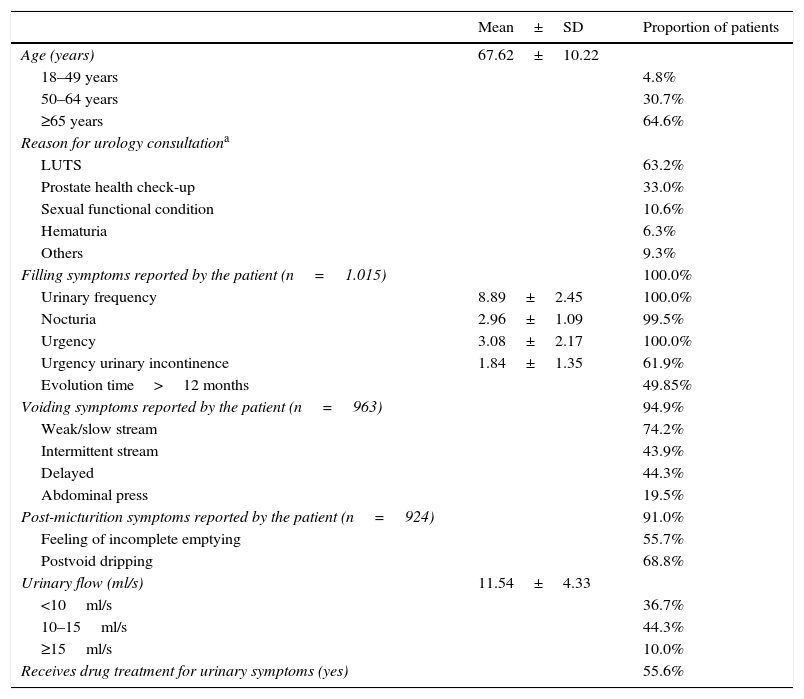The study sought to determine the symptomatic profile of men with lower urinary tract symptoms (LUTS) who visited a urology clinic in Spain and its impact on their health-related quality of life (HRQL).
Materials and methodsA national, epidemiological cross-sectional study was conducted and included 291 urology clinics. The prevalence of storage LUTS was investigated in 25,482 men. The study collected sociodemographic and clinical data from a subgroup of 1015 patients with storage LUTS who filled out the International Prostate Symptom Score (IPSS), Overactive Bladder Questionnaire Short Form (OABq-SF) and Patient Perception of Bladder Condition (PPBC) questionnaires. The impact of urinary urgency on HRQL was analyzed.
ResultsThe prevalence of storage LUTS was 41%, increasing with age: 14.1%, 41.5% and 60.8% for patients aged 18–49, 50–64 and ≥65 years, respectively. Of the 1015 selected patients, only 2.6% had storage symptoms exclusively. Symptom severity (IPSS) increased with age. Nocturia, frequency and urgency were the most common symptoms and had the most impact on HRQL (IPSS and OABq-SF). The number of urgency episodes was inversely correlated with the HRQL (r=−0.773; p<0.0001). In the multivariate analysis, only the IPSS and OABq-SF bother scores were significant predictors of HRQL (p<0.001).
ConclusionStorage LUTS are highly prevalent among patients attending urology clinics in Spain. The severity of the urgency (number of urgency episodes) predicted a poorer quality of life for the patient.
Se buscó conocer el perfil sintomático de pacientes varones con síntomas del tracto urinario inferior (STUI) que acuden a consulta de urología en España, y el impacto en la calidad de vida relacionada con la salud (CVRS).
Materiales y métodosEstudio nacional, epidemiológico, transversal. Incluyó 291 consultas de urología. La prevalencia de STUI de llenado se investigó en 25.482 varones. Se recogieron datos sociodemográficos y clínicos de un subgrupo de 1.015 pacientes con STUI de llenado que completó los cuestionarios IPSS, OABq-SF y PPBC. Se analizó el impacto de la urgencia urinaria en la CVRS.
ResultadosLa prevalencia de STUI de llenado fue 41%, aumentando con la edad: 14,1%, 41,5% y 60,8% de los pacientes con 18-49, 50-64 y ≥65 años, respectivamente. De los 1.015 pacientes seleccionados solo el 2,6% presentaba exclusivamente síntomas de llenado. La gravedad de los síntomas (IPSS) aumentó con la edad. La nocturia, la frecuencia y la urgencia fueron los síntomas más frecuentes y con más impacto en la CVRS (IPSS y OABq-SF). El número de episodios de urgencia se correlacionó inversamente con la CVRS (r=−0,773; p<0,0001). En el análisis multivariado solo el IPSS y el OABq-SF de molestias fueron predictores significativos de CVRS (p<0,001).
ConclusiónExiste una alta prevalencia de STUI de llenado entre los pacientes que acuden a consulta de urología en España. La gravedad de la urgencia (número de episodios de urgencia) predijo una peor calidad de vida del paciente.












